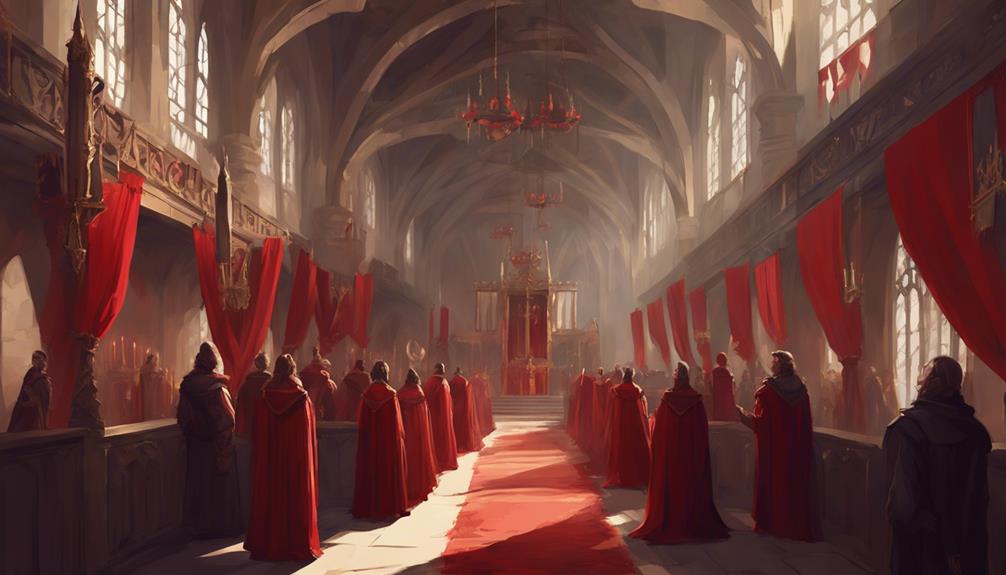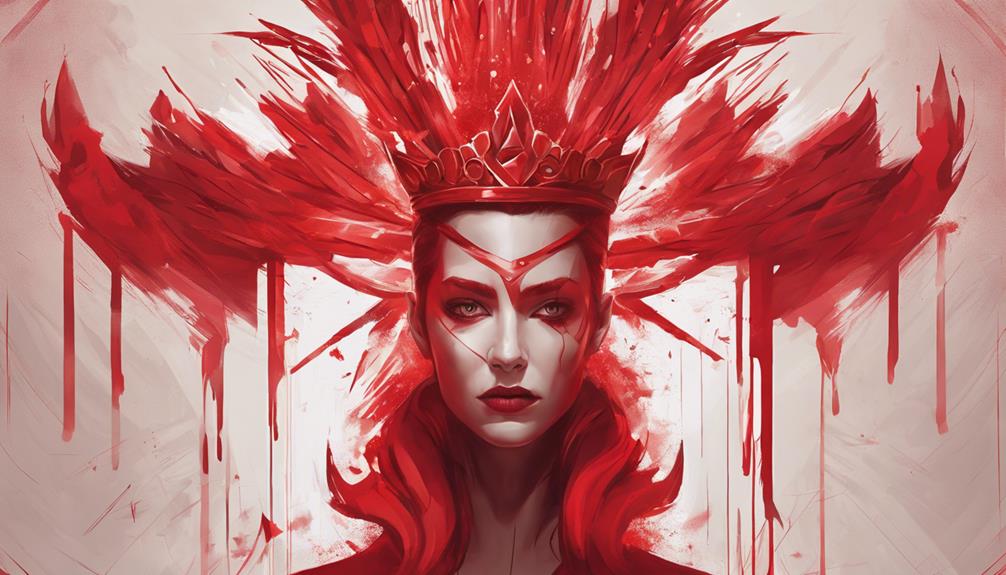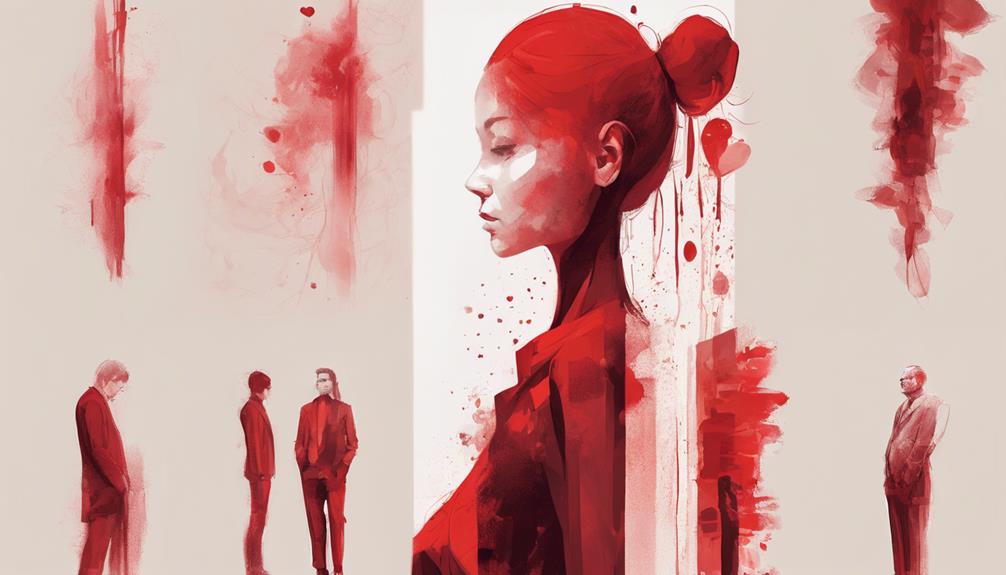Summary
- 1 Historical Symbolism
- 2 Cultural relevance
- 3 Psychological impact
- 4 Symbol of Love
- 5 Associations with power
- 6 Warning and Danger
- 7 Influence on behavior
- 8 Frequently asked questions
- 8.1 Can color blindness for the color red affect how we perceive red?
- 8.2 What are some common misconceptions about the color red?
- 8.3 Is there a connection between preference for the color red and personality?
- 8.4 How Does the Color Red Affect Our Appetite and Food Choices?
- 8.5 Can exposure to red light affect our sleep patterns?
Curious about the significance of red? Well, this vibrant hue goes far beyond just color. It is linked to life, victory, courage and passion in various cultures. Feelings such as love, power, danger and joy are all wrapped up in red. In addition, it can influence your emotions, appetite and decisions. Delve into the meanings behind this bold color to discover a world of symbols, from love and power to warnings and influence on behavior...
Historical Symbolism

Learn about the fascinating historical symbolism of the color red. Throughout history, red has had significant meaning in various cultures. In ancient Egypt, red symbolized life and victory, often used in ceremonies and to decorate tombs. The Romans associated red with courage, strength and power, using it in their military clothing and to denote wealth and status. In China, red has long been linked to good luck, happiness and prosperity, commonly worn at festivals and weddings to ward off evil spirits.
In addition, red has been a symbol of passion and love in many societies. In Greek mythology, red roses were linked to the goddess of love, Aphrodite. The color red is also associated with energy, vitality, and determination. It can evoke intense emotions, from love and desire to anger and danger, making it a versatile and impactful hue in art, fashion, and symbolism around the world.
Understanding the historical significance of red provides insight into its enduring popularity and power in contemporary culture.
Cultural relevance
We now investigate how red has different cultural meanings among different societies and traditions. Red is a color that often carries deep cultural meanings. In some cultures, red symbolizes good luck, happiness and prosperity. For example, in Chinese culture, red is associated with good luck and joy, commonly used in weddings and other celebratory events. In India, red is linked to purity, sensuality and the divine, visible in traditional wedding dresses and religious ceremonies.
In contrast, in some Western cultures, red may represent danger, passion, or even anger. In many Western countries, red is used to signal warnings or alerts, such as in traffic lights or stop signs. In addition, red is often associated with love and romance, making it a popular choice for Valentine's Day decorations and gifts.
Psychological impact

So when you see the color red, what emotions come to mind? How does this vibrant hue make you feel? Let's examine together the emotional responses and cultural significance of the color red.
Emotional responses to the color red
When you see the color red, your emotional responses can be very powerful and immediate. Red is often associated with strong feelings such as passion, love and excitement. It has the ability to capture your attention And arouse intense emotions in you. This vibrant tone can increase your heart rate and create a sense of urgency or importance.
On the other hand, red can also trigger feelings of danger, anger or aggression. It is a color that claims to be noticed, sometimes causing a sense of alarm or warning. Your brain reacts quickly to red stimuli, which is why it is commonly used in traffic signs and warnings.
In addition, it has been shown that red stimulates appetite, which is why many restaurants use it in their branding. It can make you hungry or even intensify the taste of food. This emotional response to red is deeply embedded in our psyche and influences various aspects of our daily lives.
Cultural relevance of the color red
Explore how the red color holds significant cultural importance and influences the psychological responses in various societies around the world. Red carries different meanings in different cultures, often symbolizing intense emotions such as love, passion, courage and luck. At western cultures, red is commonly associated with passion, love and sometimes anger. It can evoke feelings of heat, excitement and intensity, making it a popular choice in advertising and branding to attract attention.
In the oriental cultures like China, red is a color of good luck and joy, often seen in traditional ceremonies and weddings to symbolize happiness and prosperity. In India, red is linked to purity, sensuality and fertility, commonly worn by brides for weddings. However, in some African countries, red may represent sacrifice, danger or mourning, showing the different interpretations of this vibrant tone.
Psychologically, red can stimulate the body and mind, increasing heart rate and adrenaline levels. It is known to quickly capture attention, create a sense of urgency and even stimulate appetite. Understanding the cultural significance of red can offer perspectives on how this powerful color influence our emotions and behaviors around the world.
Symbol of Love
Let's talk about how the color red is a powerful symbol of love. It represents passionate love and is often associated with romance. Red evokes feelings of desire, affection and warmth, making it the perfect shade to express love and affection.
Symbol of passionate love
Curious to know why red is often seen as a symbol of passionate love? The color red has long been associated with strong emotions, particularly love and desire. In the realm of passionate love, red is the main color for expressing intense romantic feelings. This vibrant color symbolizes not only love, but burning passion, deep desire and sensuality.
Red kindles feelings of heat and excitement, making it the perfect choice to represent the intense emotions that accompany passionate love. It is bold, powerful and impossible to ignore, just like the enveloping nature of passionate love itself. Whether it is a bouquet of red roses, a sensual red dress or a sincere love letter written in red ink, this color has the power to convey the depth of affection.
Red Romantic Associations
Have you ever wondered why red is often recognized as a symbol of passionate love? Red has deep romantic associations that have been culturally embedded for centuries. Here are three reasons why red is an essential symbol of love:
- Passion and Desire: Red is a color that evokes strong emotions such as passion and desire. It symbolizes the intensity and warmth of a romantic relationship, igniting feelings of love and desire.
- Boldness and Courage: Red is bold and vibrant, just like the feelings of love. It represents courage in expressing one's emotions openly and fearlessly, making it the perfect color to symbolize romantic love.
- Sensuality and Romance: Red is inherently sensual and romantic. It stimulates the senses and creates a sense of intimacy, making it an ideal choice to represent the romantic aspects of a relationship.
In essence, the association of red with love goes beyond aesthetics; it embodies the fervor, boldness, and sensuality that define romantic relationships.
Associations with power

The color red is often associated with power because of its bold and commanding presence. When one sees red, one cannot help but feel a sense of strength and authority. Throughout history, red has been linked to those in positions of power, whether in politics, business or even sports. It exudes trust and demands attention, making it the perfect choice for those who wish to make a strong statement.
In many cultures, red is worn by leaders to symbolize their authority and dominance. Whether it is a red tie or a red carpet event, this color conveys a message of control and influence. Think about how seeing someone in a red suit or dress immediately captures your attention and conveys an aura of power.
The next time you want to make a powerful impression, consider incorporating red into your clothing or surroundings. Whether it's a subtle touch or a statement piece, the color red will help you exude confidence and authority in any situation.
Warning and Danger
When you encounter the color red in various contexts, it often serves as a warning sign and potential imminent danger. Red has the unique ability to capture your attention and elicit a sense of caution. Here's why:
- Stop Signals: The bright red color of stop signs is universally recognized as a signal to stop movement. It is a visual signal that requires immediate attention to avoid accidents.
- Fire alarms: Fire alarms often feature red lights or covers. This color choice is intentional because red is easily visible, quickly alerting you to the presence of a potential fire hazard.
- High Voltage Signals: In industrial environments, high-voltage signs often use red to warn of dangerous electrical equipment. This bold color choice is designed to emphasize the need for caution to avoid accidents or injuries.
Influence on behavior

When surrounded by red, it is crucial to be aware of theimpact that this powerful color can have on your behavior. Red is known to have a significant influence on the emotions and actions, with the ability to increase the heart rate, increase blood pressure and even increase energy levels. Exposure to red can make you feel more passionate, assertive and confident, arousing strong feelings of excitement, urgency and intensity within you.
In addition, red can also affect your decision-making. It is associated with the courage and strength, motivating you to take bold risks and stand out from the crowd. However, excessive exposure to red can lead to feelings of anger, aggression or irritability. Therefore, it is important to be aware of how red can affect your behavior and mood, ensuring that you channel its energy in a way that positive and constructive. So the next time you are faced with the color red, pay attention to how it affects your actions and mindset.
Frequently asked questions
Can color blindness for the color red affect how we perceive red?
Yes, the color blindness for the color red can actually affect the perception of the color red. This condition makes it difficult to distinguish between different shades of red, affecting the ability to see this color accurately. People with color blindness for the color red may have difficulty identifying red objects or notice subtle variations in hues. It can affect daily tasks How to read maps or traffic lights. Consulting a professional can help you understand and effectively manage this condition.
What are some common misconceptions about the color red?
Thinking about common misunderstandings regarding the red color? It is interesting how some people assume that red always symbolize anger or danger. However, red can also represent passion, love and strength. In addition, many people mistakenly believe that the bulls stir because of the red color, when in fact they react more to the movement of the bullfighter's head. So the next time you see red, remember that it's not just about anger and bulls!
Is there a connection between preference for the color red and personality?
Have you ever wondered if your preference for the red color say anything about your personality? Some studies suggest that there may be a link between the two. People who are attracted to red often have characteristics as passion, energy and confidence. It is fascinating how something as simple as choosing a color can give suggestions on who we are as individuals. Next time you choose a red shirt, think about what it might reveal!
How Does the Color Red Affect Our Appetite and Food Choices?
Regarding how the red color affects your appetite and food choices, it is fascinating to note that studies suggest that red can actually increase your hunger And make you eat faster. This color is often associated with passion and energy, which might explain why it can increase your desire for food. So, the next time you choose what to eat, keep in mind that seeing red may be whetting your cravings!
Can exposure to red light affect our sleep patterns?
Exposure to red light can actually affect your sleep patterns. The reason for this lies in the way red light affects the production of melatonin in your body, the sleep hormone. When you are exposed to red light, melatonin levels may decrease, making it harder for you to fall asleep. Therefore, it's a good idea to limit your exposure to red light, especially before bedtime, to ensure you have a good night's rest.
